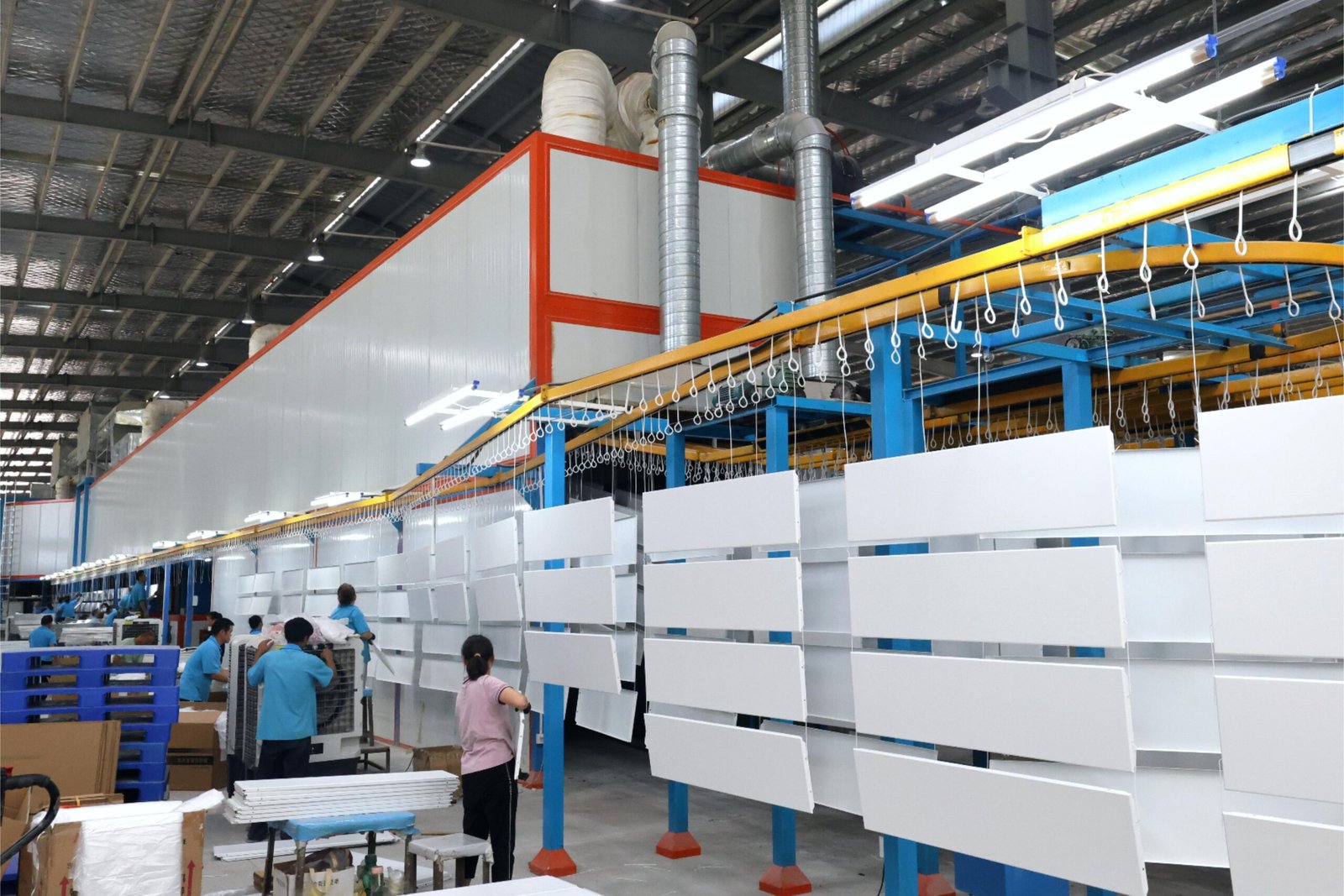
Powder coating is a widely used finishing technique that enhances the durability and aesthetic appeal of metal and non-metal surfaces. It provides excellent protection against corrosion, wear, and environmental factors.
Among the various powder coating methods, the fluidized bed technique stands out for producing thick, uniform coatings ideal for industrial and outdoor applications.
1. What is a Fluid Bed in Powder Coating?
A fluidized bed is a specialized powder coating method where finely ground powder is suspended in a tub using compressed air, creating a fluid-like state. Preheated metal parts are dipped into the powder, which melts on contact and adheres to the surface.
Key Features:
- Ideal for thick coatings in one application
- Useful for high-performance, corrosion-resistant finishes
- Alternative to electrostatic spray methods when film build is critical
2. How Does a Fluid Bed Work?
Step-by-Step Process:
-
Preheating the Substrate
The part is heated to 350°F–450°F to promote proper powder adhesion. -
Powder Suspension
Powder is placed in a container with a porous bottom. Air is forced through, creating a fluid-like motion. -
Dipping Process
The hot part is dipped into the "fluidized" powder. Powder melts on contact and bonds to the surface. -
Post-Fusion and Curing
An optional curing stage in an oven ensures full fusion and a durable, smooth finish.

3. Advantages of Fluid Bed Powder Coating
✅ Uniform and Thick Coating
- Coating thickness typically ranges from 7 to 25 mils
- Eliminates issues like uneven spray and Faraday cage effects
✅ Durability and Corrosion Resistance
- Ideal for outdoor and high-impact applications
- Provides excellent protection against moisture, abrasion, and chemicals
✅ Eco-Friendly Process
- No VOCs or solvents
- Excess powder can be collected and reused
✅ Efficient and Cost-Effective
- High transfer efficiency
- Reduces waste and rework
4. Applications of Fluid Bed Powder Coating
| Sector | Common Uses |
|---|---|
| Industrial Equipment | Pipes, valves, structural supports |
| Automotive & Aerospace | Underbody parts, springs, brackets |
| Outdoor Furniture & Fixtures | Playground equipment, railings, fencing |
| Consumer Goods | Shopping carts, bicycle racks, cookware |
| Medical Equipment | Sterilization trays, antimicrobial-coated tools |
5. Materials Used in Fluid Bed Powder Coating
| Powder Type | Properties & Best Use Cases |
|---|---|
| Epoxy | Strong adhesion, indoor applications |
| Nylon | High flexibility, abrasion resistance, food/medical use |
| Polyethylene | Economical, used in general industrial applications |
| Polyester | UV-resistant, best for outdoor furniture and fixtures |
| Halar (ECTFE) | Premium corrosion resistance, used in chemical industry |
6. Limitations of Fluid Bed Coating
❌ Limited Detail and Precision
- Thick coatings can obscure fine features or engravings
❌ Heat Sensitivity
- Not suitable for materials that can't handle high heat
❌ Thickness Control Challenges
- Precise thickness control is harder than with spray coating
7. Best Practices for Fluid Bed Powder Coating
✅ Proper Surface Preparation
- Remove contaminants using sandblasting or chemical treatment
✅ Controlled Preheating
- Maintain consistent temperatures to ensure even melt and adhesion
✅ Optimized Dipping Time
- Avoid overcoating by monitoring immersion time carefully
✅ Post-Curing
- Use a curing oven for extra smoothness and durability
Conclusion
Fluid bed powder coating is a highly effective and eco-friendly method for applying durable, uniform coatings to metal and non-metal products. Its thick film capabilities and cost efficiency make it a top choice for industrial, automotive, and consumer goods manufacturing.
By understanding its working principles, advantages, limitations, and best practices, manufacturers can fully leverage this technique to enhance product longevity and performance.
As powder coating technology evolves, fluid bed systems will continue to expand their role across industries, offering better materials, smarter control systems, and more sustainable solutions.
